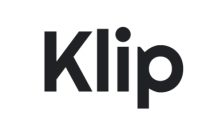KLIP Archive – Digital Archiving Solution for Physical & Scanned Records
KLIP Archive brings order, visibility, and efficiency to both your physical and digital archives.
Centralized, web-based, and fully compliant, it ensures your documents are secure, searchable, and accessible anytime, from anywhere.
Introduction
KLIP Archive is a unified platform for organizations that need to manage physical records alongside digital documents. It centralizes your archive on a server to prevent duplicates, enforce consistent metadata, and provide controlled access. This solution allows institutions to handle document intake, processing, storage, retrieval, and retention efficiently while supporting both scanned and paper records.
Core Capabilities
Archive Consultation
- Add documents – Upload multipage or multiple PDFs effortlessly.
- Search by metadata & full-text – Quickly find records using OCR-enabled content.
- Permission-based results – Users only see data they’re authorized to access.
- Advanced filtering – Narrow searches by department, year, type, retention.
- Export search results – Generate customizable reports for audits and reviews.
- Simultaneous access – Multiple users view the same document at the same time.
- Box/dossier inventory – See full contents of physical containers.
- Hierarchical archive view – Navigate by department, year, and document type.
- Personal folders – Organize accessible documents in individual user spaces.
Operational Archive
- Automatic intake – Sync new records from registries or document systems.
- Document history view – Track actions and events for every document.
- Processing interface – Assign document/dossier types and metadata consistently.
- Autocomplete from nomenclature – Ensure accurate archival classification.
- Metadata completion – Record content and physical location information.
- Automatic opis generation – Create structured dossier inventories instantly.
- Label generation – Produce standardized labels for physical files.
- Handover & disposal forms – Auto-generate formal archival documents.
- Dossier-level management – Edit fields, assign locations, search and filter dossiers.
Physical Archive Management
- Room configuration – Define rooms, sectors, racks, and shelf levels.
- Location assignment – Track exact physical placement of every dossier.
- Nomenclature management – Upload, version, and display archival taxonomies.
- Label configuration – Define label sizes and formats used institution-wide.
- Barcode generation – Unique codes for easy physical identification.
- Retention statistics – Predict expiring retention periods early.
- Document type statistics – Understand distribution of archived records.
- Usage & capacity tracking – Monitor archive load and free space.
- Handover/extraction tools – Generate extraction carts and automated reports.
OCR Processing
- Scheduled OCR – Runs automatically outside business hours.
- Text recognition – Extracts searchable text from scanned documents.
- Full-text search support – Enables deep content discovery across the archive.
- Automated background processing – No user action needed for OCR tasks.
Localization & Interface
- English UI + Regionalization – Full interface for local institutions.
- Diacritic support – Accurate text entry and display across fields.
- Web-based access – Accessible from any modern browser.
Administration Modules
Archive Corps
- Archive structure setup – Create complete physical archive architectures.
- Nomenclature versioning – Maintain multiple archival structures with history.
- Metadata field configuration – Define field types, autocomplete, and formats.
- Label type management – Add and update label dimensions centrally.
- Statistical reporting – Generate retention, type, and evolution dashboards.
- Archive load visualization – See real-time occupancy of rooms and racks.
Nomenclatures
- Metadata fields – Define structured fields for document classification.
- Department hierarchy – Configure departments and relationships.
- Document types – Associate document categories with departments.
- Event definitions – Control workflow states and allowed progressions.
- Role management – Group permissions into structured user roles.
- Permission lists – Manage granular access across the system.
- User accounts – Assign roles, departments, and permissions per user.
Who Uses KLIP Archive
Public institutions with regulatory retention requirements
Organizations handling structured dossiers and physical storage
Departments managing scanned documents and physical records
Teams needing controlled access and audit-ready reporting
Key Advantages
- Centralized, consistent archive data
- Handles both digital and physical records
- OCR-enabled full-text search for scanned documents
- Complete physical location tracking
- Automatic generation of labels, opis, and forms
- Strong permissions and departmental access control
- Real-time statistics and capacity monitoring
